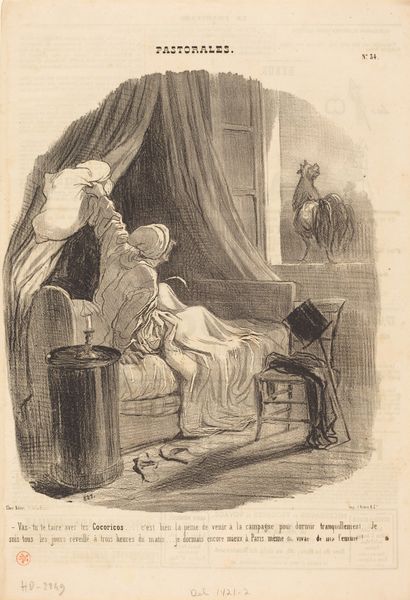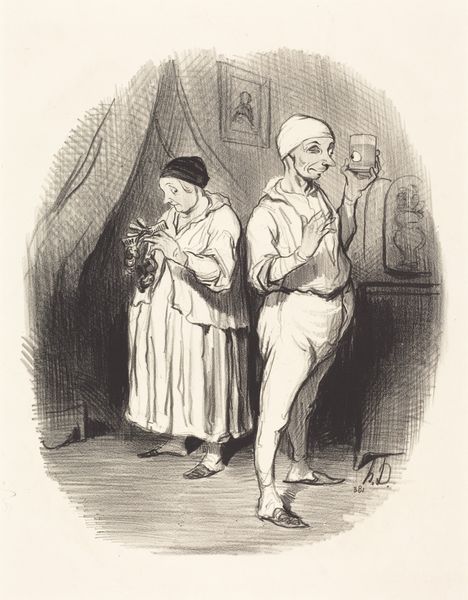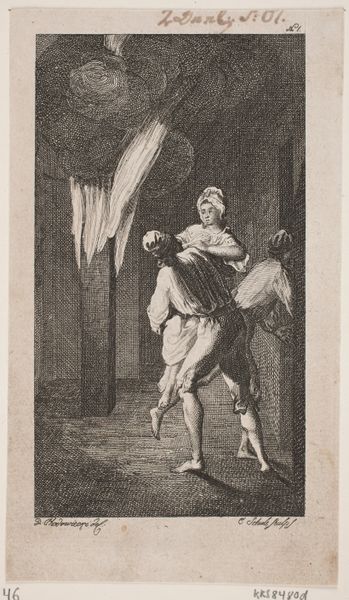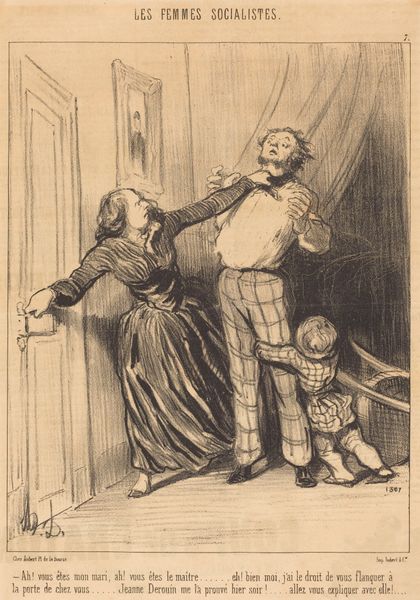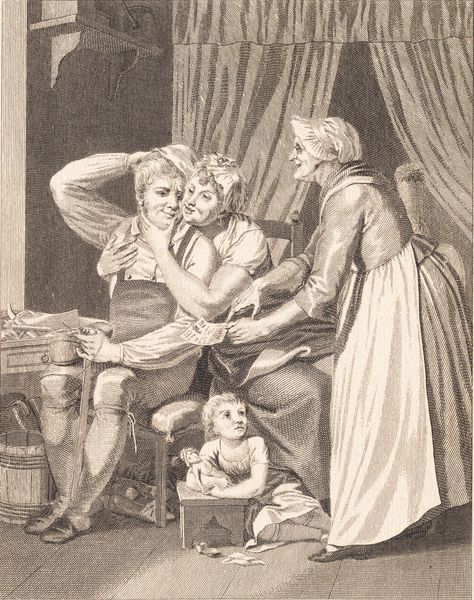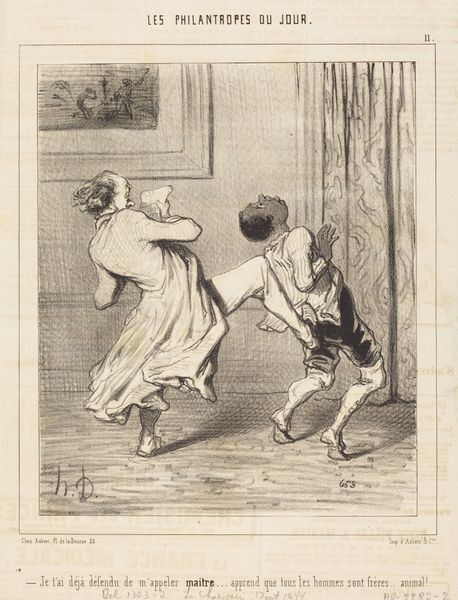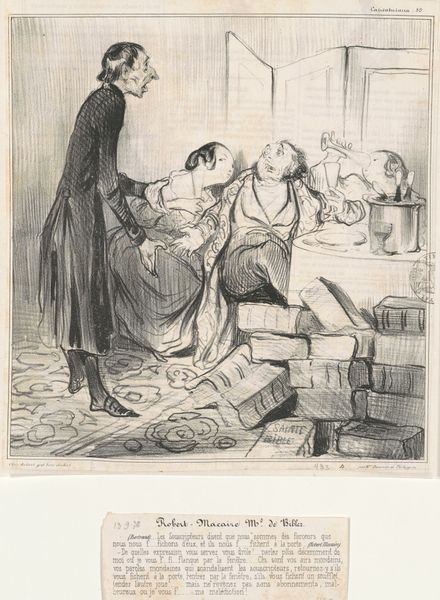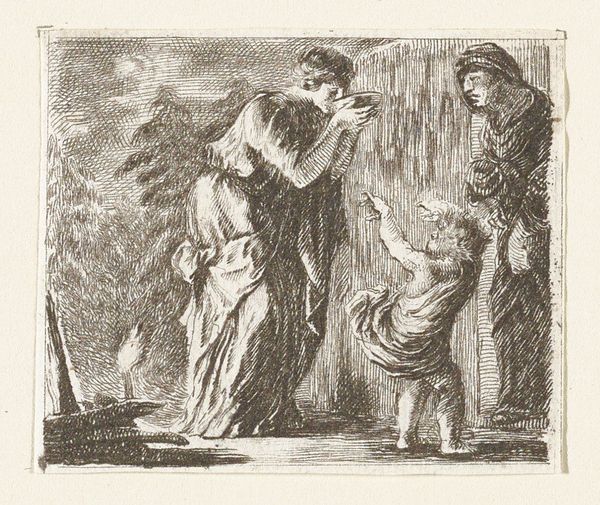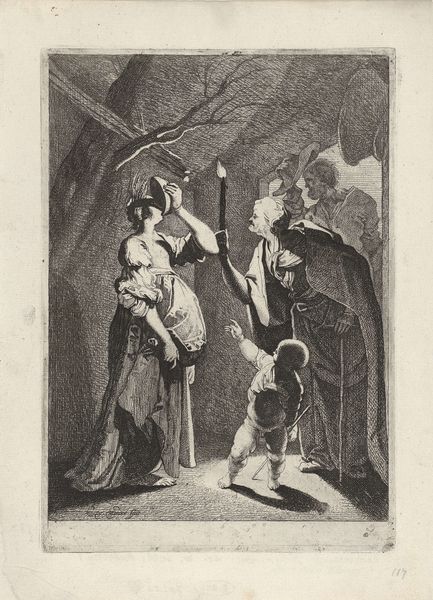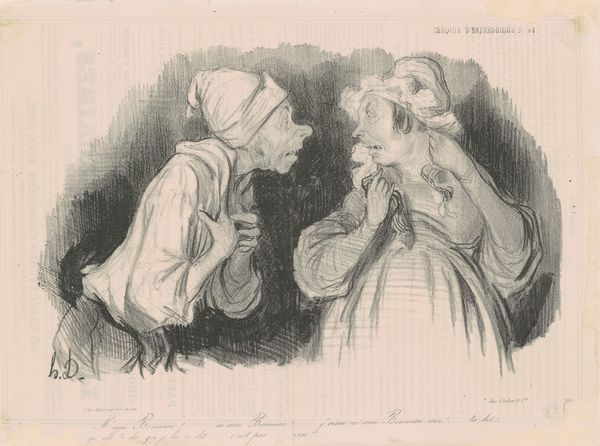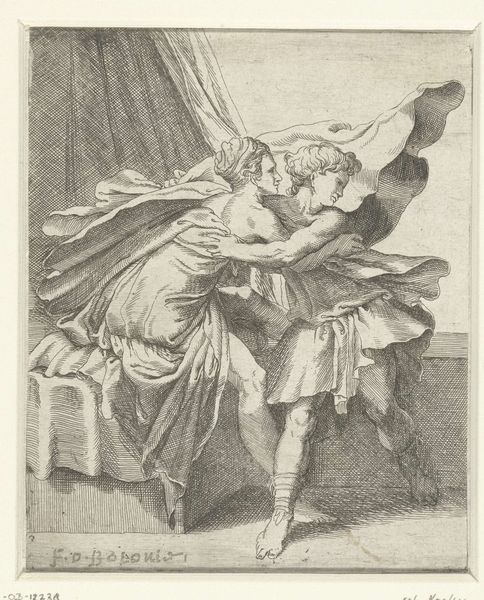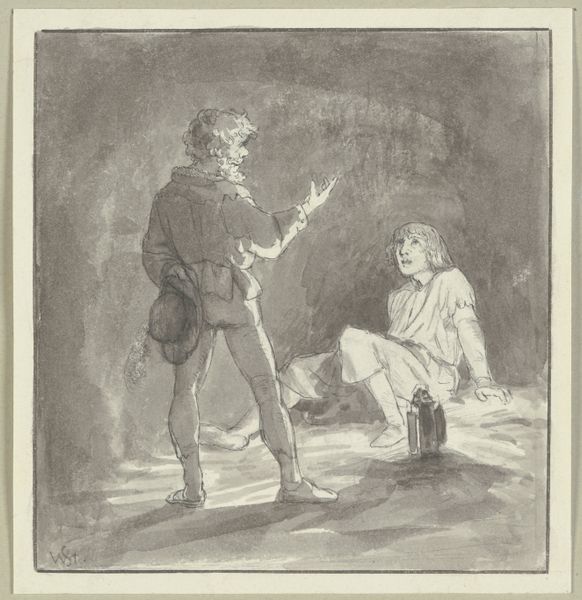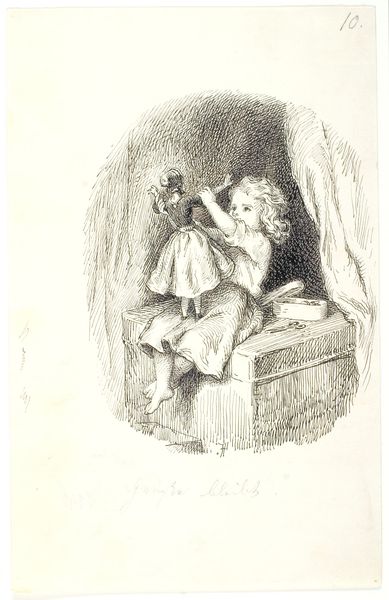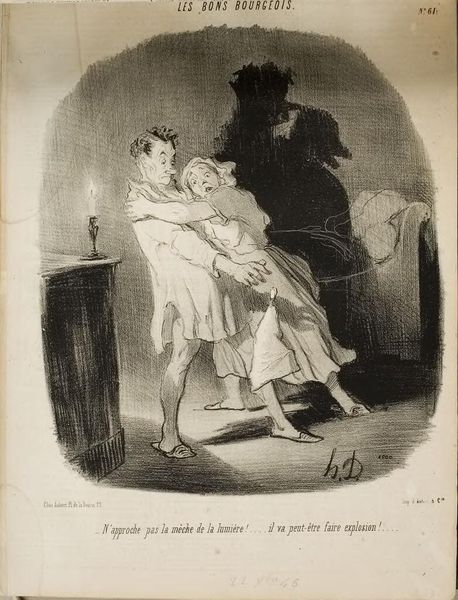
drawing, lithograph, print, pen
#
portrait
#
drawing
#
lithograph
# print
#
caricature
#
romanticism
#
pen
#
genre-painting
Copyright: National Gallery of Art: CC0 1.0
Curator: Honoré Daumier’s lithograph, “Je crois qu'on bat le rappel…," roughly from the mid-19th century, captures a moment of intense domestic drama. It's striking how raw and immediate it feels, doesn’t it? Editor: Immediate is right! My first impression is the theatricality. They’re almost like puppets in a poorly lit play. The lithographic pen work accentuates their panicked state. What do you see as significant in its social context? Curator: Consider Daumier's context: a France steeped in revolution and shifting political sands. His use of lithography—a printing technique accessible to a wider audience—allowed for rapid dissemination of political and social critiques. The depicted scene, I believe, satirizes bourgeois anxieties about conscription, about civic duty versus personal comfort. Editor: Absolutely. And what’s intriguing to me is how the medium shapes the message. Lithography allowed for nuanced gradations of tone and detail, perfect for caricature, but it’s still a mass produced form. Daumier masterfully uses this democratized method to critique a society caught between revolutionary ideals and ingrained hierarchies. The material conditions of its making amplify its satirical punch, targeting class and privilege. Curator: Yes, there is almost a frenetic quality to the lines that evokes their emotional state. Look closely—the cross-hatching gives the scene depth and enhances the characters’ distress. They're not heroic figures; they're caught in a very real, human conflict. It speaks to anxieties surrounding family, obligation, and self-preservation during a tumultuous era in France. What does the imagery communicate to modern eyes, you think? Editor: I see enduring relevance. The push-and-pull between individual fear and social responsibility remains a potent theme. Though the material conditions of viewing this print are so changed from its production. Now we have instant global circulation rather than locally consumed images that have become ubiquitous reminders. The political context changes, but the art… it keeps doing work. Curator: I agree. The print remains so vibrant. It underscores how potent art can be when entwined with the anxieties of its time.
Comments
No comments
Be the first to comment and join the conversation on the ultimate creative platform.
